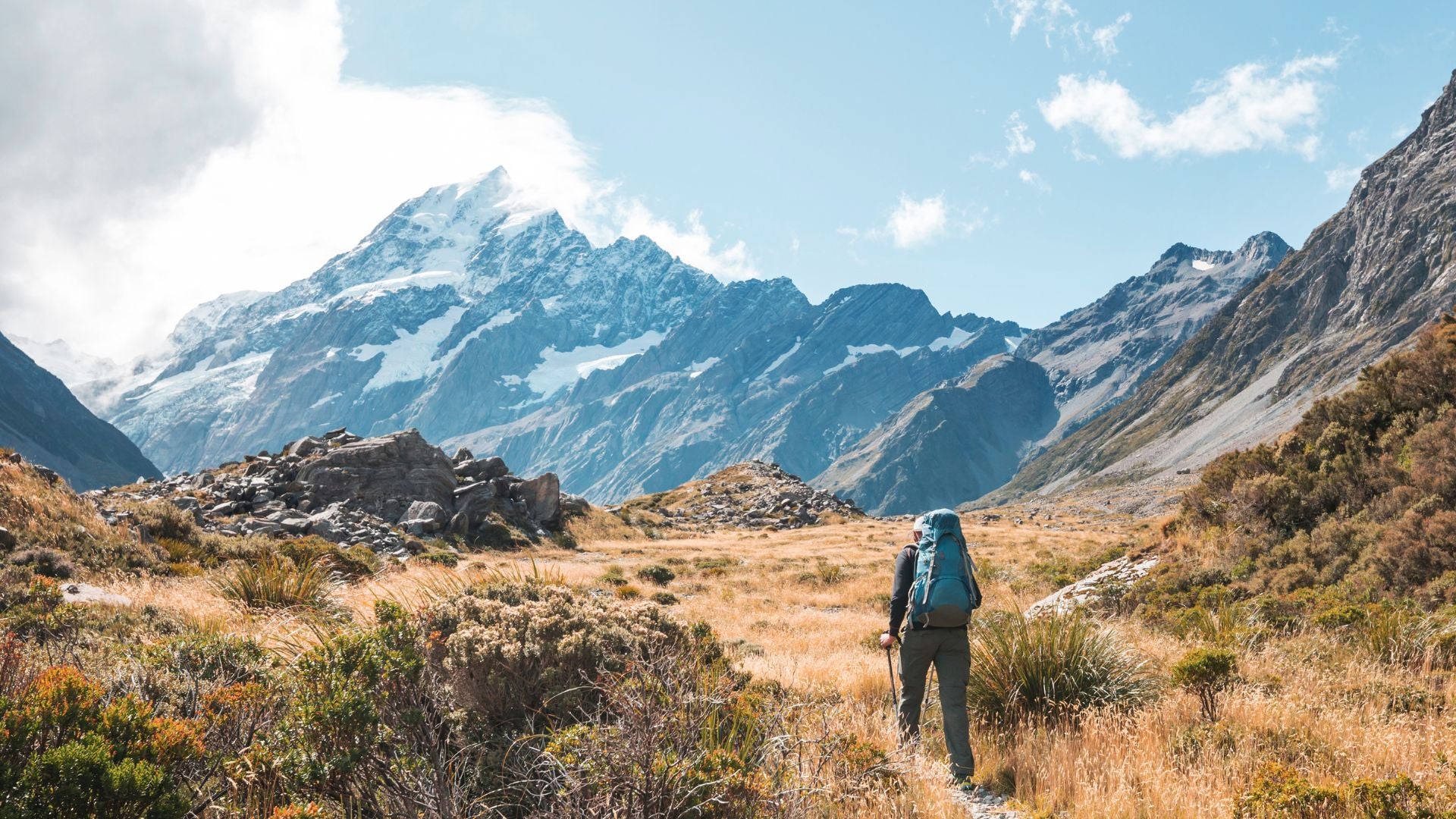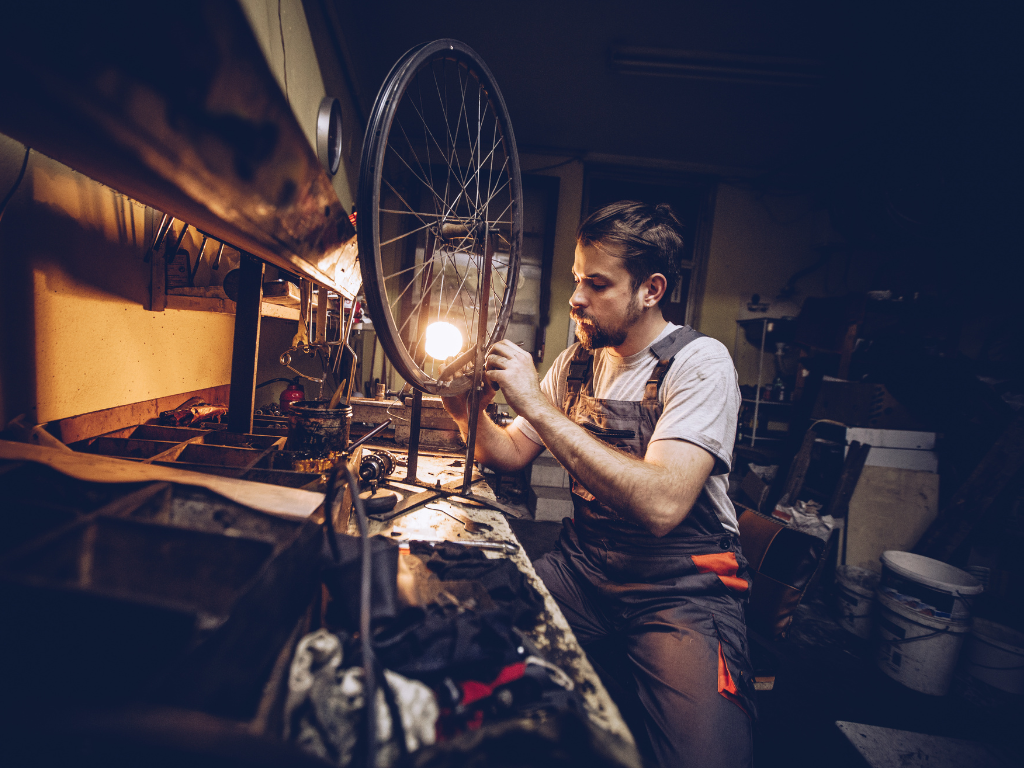I love the opportunity it gives me to see and experience the most stunning terrains and landscapes—places that take your breath away. I love being in nature with just yourself and your breath. The feeling of accomplishment when you are finished and the camaraderie and friendships formed on the trails with random people, all with similar goals. But the part I love most about running is the mental side—pushing yourself when you are tired, never giving up, wanting to give up and walk, but telling yourself to run even faster, feeling so beat up that you just break out into the biggest smile. Embrace the pain, enjoy the suffering.

Embracing the Journey: How Running Transformed My Life
What do I love about running?
But how do you get to that point of "loving" it?
I’m Lee, a 45-year-old runner from Australia, now living in beautiful New Zealand. Though I grew up playing many sports, running wasn’t one of them.
When we moved to New Zealand, my wife started running and entered an event, the Wellington Round the Bays. We lived in Wairarapa at the time, and she asked if I could come and drive her to the run. I said yes, and as a "thank you" and to give me something to do while there, she signed me up to do the 10km road race. So I had to train, right? But I had no idea what I was in for, so a week out I ran, once. 10km—my first and only training run. On the day of the event, I ran as fast as I could, and although it was tiring and probably very hard to watch, I finished and was surprised at how I went (all things considered). I especially loved the atmosphere and how encouraging the other participants were. I guess I got the bug. I wanted to do it again… and do it better! So I started to train with a bit more structure, purpose, and consistency, and I signed up for another event.
Road races, half marathons, and marathons were where I set my focus for a while, but I was starting to hear rumors about this crazy ultra trail running thing. I'd just gotten back from Australia having run the Brisbane Marathon. A 42.2km road race, I had suffered tremendously with cramps in the heat and humidity, and didn't have a whole lot of fun. It wasn't the race I was hoping for, and I needed redemption. With no other events entered, I started to look at a few upcoming trail races. I enjoyed running in the bush and on trails as part of my training, but I thought trail running was a whole different level and not for me.
Seeking a 'win' and a challenge that would redeem my Brisbane race, I settled on an event in the Bay of Plenty—The Trail Trilogy. A 55km distance trail run from Thames to Waihi, it was a seemingly ‘easy’ first trail run with almost no elevation! I signed up excitedly but was soon to learn a few more hard lessons.
I started the race strong and felt great, but about halfway through, with 25 km of flat, dusty path behind me, I realized I was in trouble. Running with a pack for the first time, carrying mandatory trail ultra gear, quickly took its toll on my shoulders and energy. I struggled with nutrition and hydration, miscalculating water and fuel needs, leading to dehydration. I started walking, feeling like a mess. After 6 hours, I finally crossed the finish line sweaty, sore, and demoralized, telling my wife, "I’m never running an ultra trail event EVER again."
That didn't last long, though. Ten minutes later… "and the spot prize for a free entry to the Cape Kidnappers 34 km Trail Run in two weeks' time, goes to Lee!" I laughed, my wife laughed, and most likely the universe laughed. But not to waste a prize, I signed up, and the reflection process began. Where did I go wrong?
Taking lessons from Trail Trilogy and not wanting to repeat those unnecessary hardships, I ran every training run for the next couple of weeks with my pack on, and I got used to using electrolytes and feeling better. Then on race day, I just mentally put myself in the zone. Shazam. I absolutely nailed it. Even though it was shorter than the previous race, it was definitely hillier! And I loved that! I had a glimpse of what draws most people to trail running; I had a good, strong race, the trails were diverse and fun, and I felt a huge sense of accomplishment… whilst embracing the pain and suffering.
Since then, I’ve been fortunate to run across New Zealand’s beautiful landscapes, from the Wilderness Trail on the West Coast and the Redwood Forests in Rotorua to the rugged Tararuas and the iconic Milford and Rakiura Tracks.
I'm grateful for the experience of being able to run famous trail running events like the Old Ghost Road, Naseby Great Water Race, WUU2k, Race Tekapo, Routeburn Classic, and the Kepler Challenge too. My favorite experiences, though, are the races that allow you the privilege of access to private tracks and properties, places runners can't usually get onto, like the Shotover Moonlight and the Wai2k. Trail running and completing these events is a great way to experience new places, and with the support and logistics taken care of, and the camaraderie of the participants lifting you up—in my mind, there's nothing better.
What Mandatory Gear Do I Use for a Trail Running Event?
The first thing you need is a good running vest. You want a vest that has at least a 12-litre carrying capacity to house your mandatory gear, which usually consists of:
-
Long sleeve thermal top and thermal leggings: I take a 260-weight Icebreaker Merino top and leggings. If you get cold, you're going to want the best, and nothing compares to the Icebreaker 260 for staying warm in harsh climates.
-
Thermal beanie and gloves: Again, I take an Icebreaker Beanie, and I generally wear a pair of Icebreaker 360 Sierra Gloves while running. These gloves have a suede palm, which provides extra protection for your hands, especially if you use them to help yourself balance or climb on rough terrain.
-
Seam-sealed jacket and pants: I take a Patagonia Torrentshell jacket because it is seam-sealed but also packs down into its own pocket, meaning less bulk in your pack. The only reason you would wear this jacket during your run is if you are injured, couldn't move, or could only walk. I also have a pair of Patagonia Torrentshell pants, which are also seam-sealed and waterproof. There are only a few events that require the pants, but it is good kit to have.
-
First Aid Kit: This includes an emergency bag and a whistle, which most events require you to have these days. I also take compression bandages, crepe bandages, plasters, scissors, Panadol, Nurofen, Betadine, and a little tube of Gurney Goo in case of chafing.
I have a Sea to Summit compression sack, into which I put all my mandatory gear, and I compress it as small as possible to reduce bulk in my running vest.
All this gear helps keep us safe from the elements, especially if the weather turns quickly, as it can here in New Zealand. It also gives us time, if we suffer an injury, to be able to help ourselves or wait for assistance if needed. Remember, having the right gear is not just about you—in my experience, you are most likely to use your mandatory gear for someone else who has hurt themselves.
What Do I Eat and Drink During an Event?
Most events will have an array of food at aid stations, but I prefer to take my own. Generally, I take Ems Cranberry Bars or Clif Bars (Choc Chip). It’s good to stick with foods you've eaten while running before. I’ve seen people eat things they’ve never eaten before while running, then get sick because their body can’t handle them.
-
Shorter runs (between 10 km and 21 km): I take the Gu Energy Chews 15 minutes before starting; these give you that quick hit of energy. I also take two 500 ml flasks of water.
-
Longer runs (more than two hours): I use caffeinated Tailwind. I have two flasks with a stick of Tailwind in each, mixed with 500 ml of water. I make sure to drink one flask every hour I am running. Tailwind has carbohydrates, which help fuel the body for longer exertions of physical activity. I also take a bladder of water with me that holds two liters, and I try to consume roughly 100 ml per km.
What Is Some Other Kit I Can’t Live Without?
-
Ciele hats: I have a lot of these, and I love wearing them during my runs. They are lightweight but stay tight on your head even when it’s windy, and they come in so many cool colors.
-
Patagonia Houdini Jacket: Just what I need to get out the door in the mornings. It is lightweight and keeps the cold off you just long enough so you can warm up, especially on those cold South Island mornings.
-
Buffs: These are great to keep your neck warm, or you can wrap one around your wrist to wipe sweat away or remove mucus from your nasal passages.
-
Icebreaker Gloves: An absolute must-have to stop the hands and fingers from freezing.
-
Garmin watch: I mean, how else would I record my adventures?
-
Asics GT-2000 shoes: Shoes are important, and these have been my everyday running shoe for the last eight years.
How Do I Get Started with Running?
People who are curious about getting into running but maybe have some doubts or fears often ask, what's the first thing they should try? My answer is... get a folding chair, a chili bin of drinks and snacks, find a running event, and go set yourself up at the finish line (on course) and watch the runners come in. You are guaranteed to be inspired and will most certainly see someone crossing the finish line who will remind you of yourself. That should light the fire! Secondly, good shoes and socks. Your feet will take you far, so look after them!



